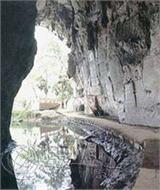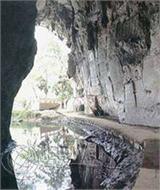Guilin Qixia Chan Temple - Guilin History and Culture
Guilin is a historical and cultural city with brilliant history. The beauty of Guilin's landscape is known all over the world, which makes Guilin's tourism culture another world-renowned brand.
Qixia Temple is located in Guilin's Seven Star Park. In 587 (the tenth year of Kaihuang during Sui Dynasty), when monk Tanqian traveled around Guilin, he wrote three words "Qixia Cave" (another name for "Seven Star Cave") on the wall of Putuo Mountain Seven Star Cave. He meant to refer that the stalactites inside the Seven Stars Cave are colorful like brocade clothes and rosy clouds. Since then, in Tang Dynasty, Qixia Temple was built at the foot of the mountain. Unfortunately, Qixia Temple was destroyed by war in Xianfeng period, until the eighteenth year of Guangxu (1872), Zhang Liangui, governor of Guangxi, collected 2600 liangs of silver, from March to July of that year, it took five months to restore all the existing buildings. The main peripheral buildings also restored the "Tingyue Pavilion" and "Banyue Pavilion" built by monk Hunrong. The Qixia Temple built by Hunrong embodied strong national spirit. His "Tingyue Pavilion" and "Banyue Pavilion" were taken half of the word "Ming", meaning the hope for the revival of Ming Dynasty.
In November 1944, the Japanese army invaded Guilin and shelled Seven Star Cave. The temple halls built by monk Hunrong became ruins, only the mountain gate remained. On September 28, 2002, after one year and four months of intensive construction, Guilin Qixia Temple officially held a grand completion ceremony and Buddha statue opening ceremony. The rebuilt Qixia Temple includes the original Qixia Temple and the former site of Shoufo Nunnery, including Tianwang Hall, Daxiong Treasure Hall, Guanyin Hall, Sutra Depository, Abbot Chamber (originally the residence of the abbot of the Zen monastery, because the bedroom is square, but has unlimited capacity, so everyone calls the room where the abbot lives as fangzhang, later even the abbot monk is called "Fangzhang"), monk's quarters, vegetarian restaurant, Buddha art store, Tingyue Pavilion, bell and drum tower, etc., covering an area of about 18,000 square meters, with a building area of 3315 square meters, with a total investment of more than 30 million yuan, adopting the majestic and elegant imitation Tang style. Tianwang Hall is a double-eave hip-and-gable roof building, the bell and drum tower is a pointed roof building, the Great Hero Hall is a single-eave four-tilted roof hall imitating Tang architecture, with five bays wide and four bays deep, covering a building area of 330 square meters.




